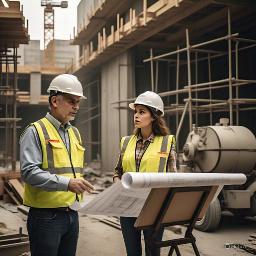

risk management that starts at the drawing board. In Canada’s regulated construction landscape, working with a qualified fire code consultant is a strategic move that helps architects, developers, and building managers avoid code violations, project delays, and safety risks.
Whether you’re designing a new high-rise, renovating an existing facility, or managing compliance for a multi-building portfolio, a fire consultant provides critical insight into how your project can meet fire safety regulations without compromising on design or budget.
A fire code consultant is a specialized professional who advises on building design and operations in alignment with applicable fire codes and regulations. In Canada, this means working within the framework of:
Fire consultants evaluate how a building performs in terms of fire prevention, detection, suppression, and occupant evacuation. They help ensure that fire safety measures are not only code-compliant but also tailored to the unique risk profile of each project.
Fire code compliance is not optional—it’s a legal requirement. Failing to meet fire safety standards can result in:
A fire code consultant helps avoid these issues by offering proactive, technical, and strategic fire safety advice from early design through final inspection.
They assess architectural plans to ensure compliance with applicable fire and life safety codes.
Consultants develop fire safety plans for construction, operation, and occupancy phases—covering everything from egress to emergency response.
When prescriptive code requirements limit design, consultants create performance-based justifications that satisfy safety intent and gain AHJ approval.
They evaluate sprinkler systems, fire alarms, smoke control systems, and fire-rated assemblies to ensure coordinated and compliant installation.
Site visits and audits verify that fire safety installations match approved plans and function as intended.
For best results, bring in a fire code consultant during the conceptual or schematic design phase. Early involvement ensures that major design elements (like exits, fire separations, and suppression systems) are compliant from the outset.However, they can also be brought in during:
Certain building types and projects have higher fire safety demands. These include:
These occupancies often involve large numbers of people, complex layouts, and strict fire code mandates—making a fire consultant indispensable.
Vortex Fire, a leading Canadian fire and life safety firm, offers expert-level fire code consulting for complex projects. Their team is skilled in developing fire strategies, code compliance reviews, and performance-based solutions for projects that demand high safety standards and design innovation.
With national coverage and deep technical expertise, Vortex Fire ensures buildings meet all code requirements while maintaining operational and design efficiency.
While closely related, these roles are distinct:
On many projects, these two professionals work together to create a holistic, effective fire safety strategy.
Canada’s building and fire codes allow for performance-based alternatives in cases where prescriptive compliance is not practical. Fire code consultants lead the process by:
This is particularly helpful in unique designs, heritage buildings, or when working with new materials like mass timber.
A fire code consultant is more than just a box to tick for permit approval—they are an essential partner in designing, constructing, and managing buildings that are legally compliant, safe, and efficient.
For architects and building managers across Canada, working with an experienced consultant means fewer surprises, fewer delays, and a better-built environment for all users.
With fire safety codes evolving and projects growing more complex, don’t leave compliance to chance—consult a fire code expert and build with confidence.
No. They are also crucial for renovations, retrofits, occupancy changes, and compliance audits of existing buildings.
They ensure your design meets all fire safety regulations and provide required documentation and support for discussions with Authorities Having Jurisdiction (AHJs).
They allow for flexibility in design while still achieving a safe and compliant outcome—ideal for complex or innovative buildings.
Yes. Early involvement can prevent costly redesigns, failed inspections, and unnecessary code-related delays.
| No comments yet. Be the first. |